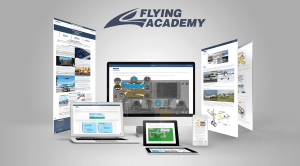What is the Zero to Commercial Pilot License 0-CPL(A)?
0-CPL(A) is designed for students with little to no flying experience and that want to pursue a career in aviation according to FAA regulations. The trainees of the program will start with PPL(A) and, upon obtaining the necessary flight experience, will continue with IR(A), CPL(A) link modules and MEL (multi-engine Land) flight programs.
After successful completion of the zero to CPL(A) course, you will be issued an FAA CPL(A) license and will be authorized to act as Pilot-In-Command (PIC) and acquire compensation on an aircraft. The privileges of the holder of a CPL(A) are to act as pilot-in-command (Captain) or co-pilot (First Officer) in charter operations and corporate flying which exercises all the privileges of the holder of a PPL(A), and IR(A).
At the end of the course, each pilot will have 190 hours of flight experience out of which 100 as Pilot in Command (PIC) if training is done under FAA Part 141; 250 hours of flight experience out of which 100 as Pilot in Command (PIC) if training is done under FAA Part 61.
What are the the Zero to Commercial Pilot License 0-CPL(A) course requirements?
- to be at least 18 years old
You need to be at least 18 years old. - to be a Class 2 Medical holder
You need to be physically fit for commercial flying (capable of holding FAA Pilot Medical Certificate Class 2 link). - to be proficient in the English language
You need to be able to read, write, understand and speak English in a fluent way
Federal Aviation Administration (FAA) Aviation English Language Standard (AELS).
An individual who holds an FAA certificate or an applicant for an FAA certificate or rating, per the eligibility requirement of the respective certificate, should continuously demonstrate the ability to read, write, speak, and understand the English language.
What is the difference Between Part 141 and Part 61?
In the US, students have the option to choose between two paths when obtaining their pilot certificates: Depending on the student’s studying preferences, time commitment to the course or long term goals, the student may choose the path freely upon enrollment.
Part 61
This form of training is rather flexible compared to Pt 141, yet generally requires more hours of
training. This path is generally chosen for those who just want to acquire one certification. This does not exclude those who want to become professional pilots
Part 141
This form of training is structured with an outline on how to present the training to the student. A syllabus (created by the FAA) is provided for every course in which an instructor will read and interpret accordingly. Those who pursue a professional pilot career tend to go for this sort of training
Which modules are there in 0-CPL(A) training?
The FAA Commercial Pilot from 0-CPL(A) training consists of the following modules:
- Private Pilot License
- Instrument Rating (practical training)
- Multi-Engine Land (practical training)
- Commercial Pilot License (practical training)
- Time Building
What will I do during my 0-CPL(A) training?
1. Ground training
Theoretical preparation lays the foundation for practical flight training.
During the Zero to CPL course, the trainee will complete theoretical courses for PPL(A), IR(A), CPL(A) and MEL (A). The curriculum for the program Zero to Commercial can be found under the PPL, IR, CPL, and ME sections.
2. Flight Training
The flight training will start with the PPL(A), continues with IR(A) and with the CPL SEL and MEL add on.The curriculum for the program Zero to Commercial can be found under the PPL, IR, CPL, and ME sections.
PART 141:
190 hours total time. Must have 120 hours of dual time including in the total.
Must complete 55 hours of training with an instructor in which must include:
- 10 hours under the hood; simulated instruments.
- One 2 hour cross-country that consists on more than 100 nm straight line distance during the day.
- One 2 hour cross-country that consists on more than 100 nm straight line distance during the night.
- 10 hours of training in a SEL complex aircraft .
- 3 hour of training 60 days prior to the checkride.
Student must complete 10 hours solo in which must include:
- One cross-country with landings at a minimum of three points and one segment of the flight must consist of a straight-line distance of at least 250 nm.
- 5 hours of night VFR conditions with 10 takeoffs/landings which must be performed during pattern work.
PART 61:
50 hours total time which must include:
- 100 hours of PIC time flight time which includes at least: 50 hours in cross-country flight of which at least must be in airplanes
20 hours of training with instructor in which includes: 10 hours under the hood; simulated instruments
- One 2 hour cross-country that consists more than 100 nm straight line distance during the day.
- One 2 hour cross-country that consists more than 100 nm straight line distance during the night.
- 10 hours of training in a SEL complex aircraft.
- 3 hour of training 60 days prior to the checkride.
Student must complete 10 hours solo in which must include:
- One cross-country with landings at a minimum of three points and one segment of the flight must consist of a straight-line distance of at least 250 nm.
- 5 hours of night VFR conditions with 10 takeoffs/landings which must be performed
during pattern work
3. Theoretical Examinations
Towards the end of the course of PPL, IR and CPL you will have to demonstrate a sufficient level of theoretical knowledge at an FAA approved testing center in the form of a written test.
To pass the written examinations you need to achieve a score of at least 70%, which is still a passing score. This test must be done before the Checkride.
4. Practical Examinations
The final aeronautical knowledge and practical test is the checkride. It will be taken at the end of the training of PPL, IR, CPL and ME and consist of an oral and practical exam.
The length of the Check Ride varies depending on the FAA examiner.
How much does Zero to Commercial Pilot License 0-CPL(A) course cost?
The course price starts from 33035 USD. No taxes are applied for pilot training in Florida.
The FAA 0-CPL(A) program fee covers the following items and services:
- Flight Instructor time for ground & practical training
- Airplane usage, including fuel.
- Subsidized iPad mini 4G + WiFi
- Bonus – account for RocketRoute flight planning services – valued $300/year
*All training fees are bound to the actual exchange rates of the local currency of the Flying Academy base where the training or a part of the training is provided. Learn more about complete training fees.
How long does it take to complete Zero to Commercial Pilot License 0-CPL(A) training?
The Zero to Commercial Course can take approximately 8 to 12 months; keep in mind that everything depends on the progress of the pilot and their availability.




